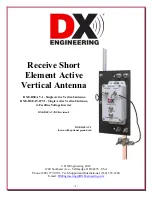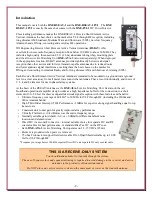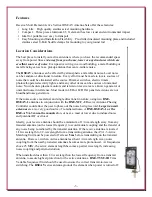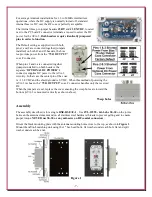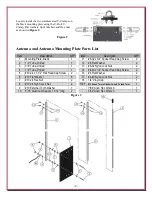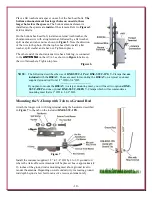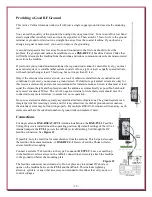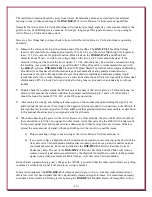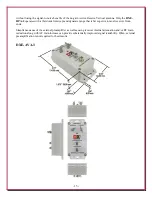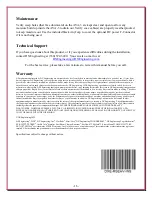
- 3 -
Features
Receive Short Element Active Vertical RSEAV Antenna Sets offer these features:
• Long Life − High quality stainless steel mounting hardware
• Compact − Three piece aluminum 8.5 ft. element has low visual and environmental impact
• Ideal for portable use; easy to transport
• Easy Mounting and Installation Flexibility − Pre-drilled insulated mounting plate and included
stainless steel U-Bolt Saddle clamps for mounting to your ground rod
Location Considerations
The best place to install your active antenna is where you have the recommended space
away from power lines and
away from your house, tower or any structures which are
excellent sources of noise
. Even passive wiring in a wood building, a metal building or
metal fencing can act as a pickup antenna that can re-radiate noise.
The
RSEAV
antennas can be affected by atmospheric and ambient noise. Local noise
can be random or directional in nature. Every effort must be made to locate sources of
noise that could be eliminated at the source. Dimmer switches, electric timers,
photocell-operated security lights, and many other items can be sources of unwanted
noise. Now obsolete plasma monitors and television receivers are a known generator of
unwanted noise interference. Most modern LED or LCD flat panel televisions are not
broadband noise generators.
If the noise source is external and single directional in nature, using two
DXE-
RSEAV-1
antennas in conjunction with the
DXE-NCC-2
Receive Antenna Phasing
Controller could allow the user to phase out the noise being received.
Large transmit
antennas
are also very good source of re-radiated noise. A
DXE-RSEAV-1 or the
DXE-AVA-3 cannot be mounted
on, or near, a mast or tower due to induced noise
and potential RF overload.
Ideally, your receive antenna should be a minimum of 1/2-wavelength away from any
transmit antenna (on the lowest frequency) to avoid mutual coupling and the transfer of
any noise being re-radiated by the transmit antenna. If the receive antenna is located
1/10-wavelength to 1/2-wavelength from a transmitting antenna, the AVA-3 Active
Matching Unit must be powered off at least
5 ms
before transmitting on the transmit
antenna. However, with an Active antenna less than 1/2-wavelength away, noise
coupling from the nearby transmit antennas becomes more pronounced. At frequencies
above 25 MHz, the active element length becomes a partial wavelength, increasing
noise coupling and pattern distortion.
When installed closer than 1/2-wavelength on the lowest frequency from a transmit
antenna, to assure highest protection for the active antenna, a
DXE-TVSU-1B
Time
Variable Sequencer Unit
should be used to ensure the correct transmit-to-receive
switching. The
RSEAV
series antenna grounds the element when power is turned off.

